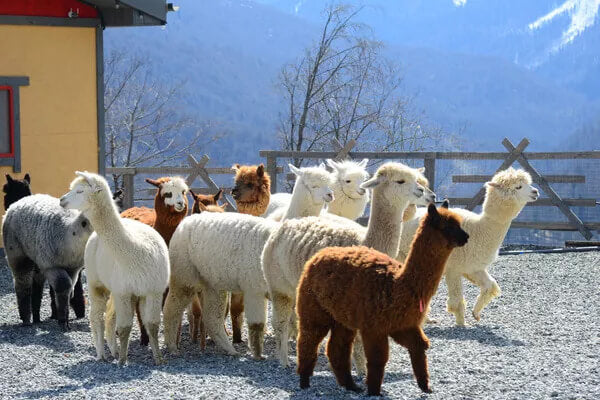
Alpaca Wool: The Soft Treasure of the Andes
Share
JULY 16, 2024
Share
Introduction:
Welcome to the world of refined luxury, where every thread is a manifestation of nature and human craftsmanship. At "CozyWoolyYarn.ca," we are delighted to present to you the next article in our series dedicated to the various types of wool that we lovingly offer in our store. Today, we will tell you about alpaca wool - a material with unique properties and advantages, making it the perfect choice for your knitted creations.
Alpaca wool is not just a material; it is the heritage of ancient cultures and the embodiment of natural splendor. We invite you to discover this soft treasure of the Andes and be inspired by its incredible qualities and history. Let’s dive into a world where each stitch brings warmth and comfort, and every thread tells a story of beauty and elegance.
History of Alpaca Wool
Alpaca wool has been used for thousands of years, starting with ancient Andean civilizations like the Incas, who valued this wool for its warmth, softness, and durability. Alpacas, relatives of llamas, were domesticated in South America and bred specifically for their wool. The Incas considered items made from alpaca wool to be a symbol of luxury and high status, using it to create clothing for nobility and priests.
Today, alpaca wool remains highly valued worldwide for its unique properties and magnificence, with its use spreading far beyond South America.
Advantages of Alpaca Wool
- Softness and Comfort: Alpaca wool is known for its exceptional softness, comparable to cashmere. It does not itch or irritate the skin, making it ideal for creating garments that gently embrace your body.
- Warmth and Lightness: Alpaca wool boasts excellent thermal insulation properties while remaining lightweight. It is seven times warmer and three times stronger than sheep’s wool, providing comfort even in the harshest conditions.
- Hypoallergenic: Unlike sheep’s wool, alpaca wool contains no lanolin, making it hypoallergenic and suitable for people with sensitive skin or allergies.
- Durability and Longevity: Due to its structure, alpaca wool is resistant to stretching and wear, making items made from it durable and practical.
Types of Alpaca Wool
There are two main types of alpacas: Huacaya and Suri. Huacaya alpacas make up about 90% of all alpacas and have soft, fluffy wool, perfect for creating various knitted items. Suri alpacas, on the other hand, have long, silky locks and make up about 10% of the population. Suri wool is especially prized for its rarity and sheen and is often used to create luxurious fabrics and accessories.
Using Alpaca Wool
Knitting with alpaca wool opens incredible opportunities for creating both everyday and elite clothing. It is used to make sweaters, scarves, hats, and blankets that not only provide warmth but also offer a sophisticated appearance. Thanks to its softness and hypoallergenic properties, alpaca wool items are often chosen for children and people with sensitive skin.
Alpaca Wool Blends
Modern technology allows for unique blends of alpaca wool with other natural and synthetic fibers, expanding its application. These blends can improve the durability, elasticity, and thermal regulation properties of the yarn, opening new horizons for creativity.
At "CozyWoolyYarn.ca," you will find a rich assortment of pure alpaca wool and its blends, inspiring you to create unique knitted masterpieces. We pride ourselves on offering the highest quality products from leading manufacturers, ensuring that each of your projects is successful and delights you with its result.
To explore our collection of alpaca wool, please visit our collection.